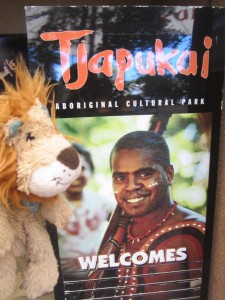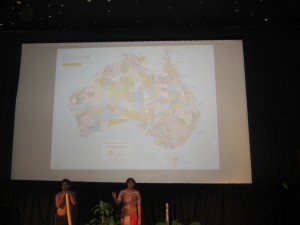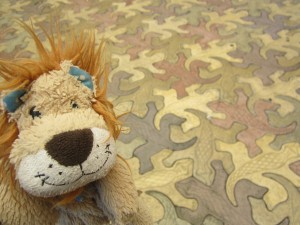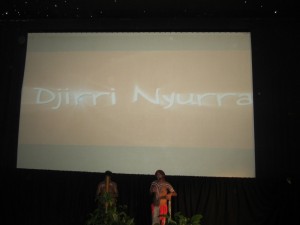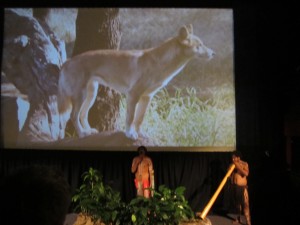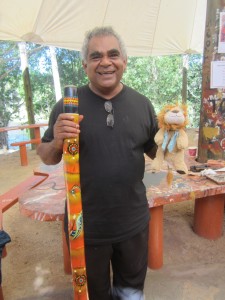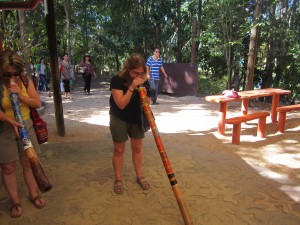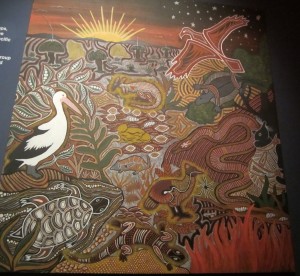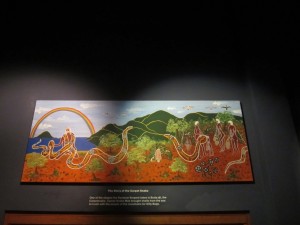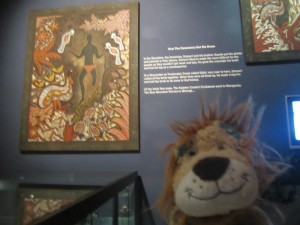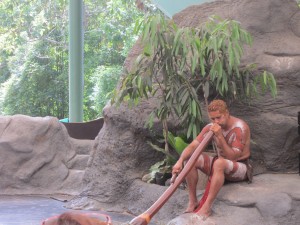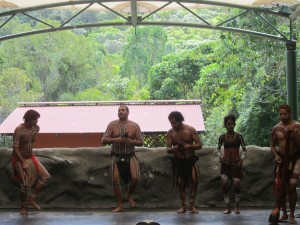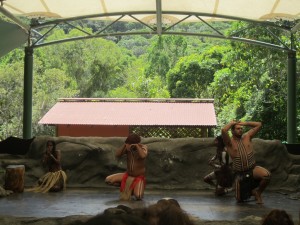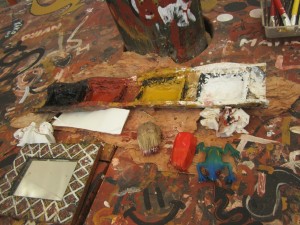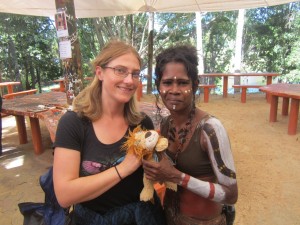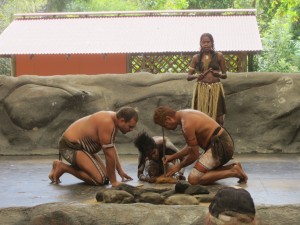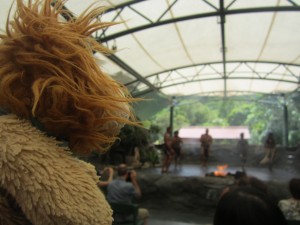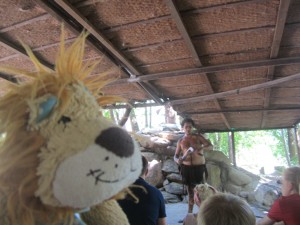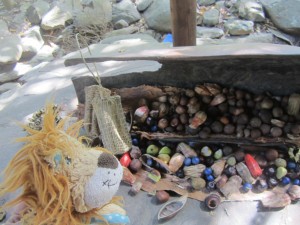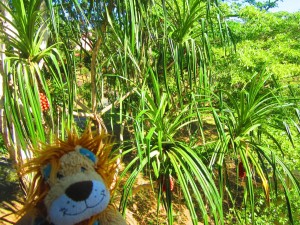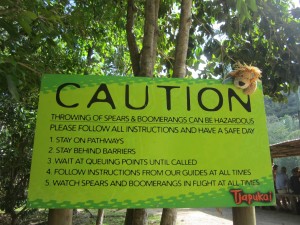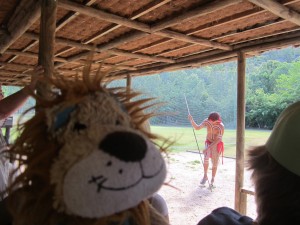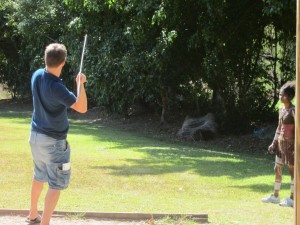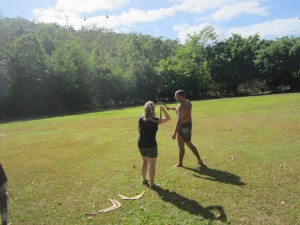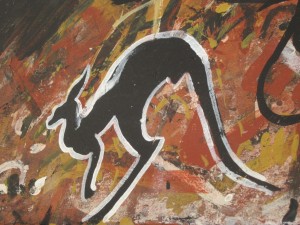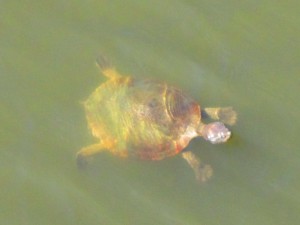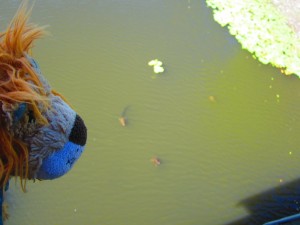Lewis the Lion set out one afternoon to go to the Tjapukai Aboriginal Cultural Park, outside of Cairns. One of the things that he wanted to do when he was in Australia was to learn more about the indigenous or Aboriginal people who had lived in Australia for many thousands of years.
Today they make up 2.3% of Australia’s population with the biggest proportion living in the Northern Territory. There are many different Aboriginal tribes scattered across Australia, of which the Tjapukai tribe is one of them. The Aborigines have a rich culture and history and because they are made up of so many different tribes, they also have many languages. It is estimated that nowadays there are more than 15 different languages (although when the Europeans first arrived there were more than 250 languages!). Lewis the Lion wondered in which of those languages he’d get to learn his magic words? Check out the Lewis Loves Languages page to find out more…
Lewis the Lion was therefore very happy to get a better understanding of one of the tribes when he visited the Tjapukai Aboriginal Cultural Park where their aim was to “edu-tain” their visitors. In other words, both to ‘educate’ and ‘entertain’ at the same time. As soon as he arrived, he couldn’t help but being impressed by the tessellating-lizard tiles beneath his feet. “How clever!” he thought. In fact later on that afternoon, he would learn more about Aboriginal art too, which you can see more of in his next blog.
Lewis the Lion then entered into the ‘Magic Space’ – a special museum where he also got a taste of what was to come for the rest of the afternoon as there were authentic artefacts, such as weaponry and jewellery, as well as murals retelling the stories of Dreamtime: the Aboriginal stories of creation.
Lewis the Lion was then welcomed to the cultural park with this greeting:
He was very happy to learn this welcome greeting, “Djirri Nyurra” which can either mean “Welcome” or “Hello” in the Tjapukai language.
Lewis the Lion then went on to learn some amazing things which he would like to share with you now:
The Didgeridoo
One of the first aboriginal objects he learnt about was an instrument called the didgeridoo, or as they called it in the Tjapukai language a ‘biri-biri‘. He learnt that it is a naturally hollowed out bark of a tree (thanks to termites!) and the longer it is, the deeper the sound. The didgeridoo is played to replicate the sounds found in nature, such as the bouncing kangaroo, the howling dingo or the twittering kookaburra. (Click on the links to see some video footage on You Tube).
Lewis the Lion marvelled at its player as it looked very tricky indeed. You had to vibrate your lips, whilst breathing in through your nose and out through your mouth. For the moment, Lewis was happy to watch the experts
but Helen did have a try a little later on.
Even though she wasn’t very good, she was happy that she managed to make a sound at all!
The top of the didgeridoo has bees wax to stop you getting splinters in your lips. (Lewis couldn’t believe it when the Tjapukai tribe members told him that Australian bees don’t sting so you can collect as much wax as you like from the hive. He still wasn’t keen on trying it out though!).
It is then painted with various designs, seeing as the Aborigines have no specific writing system. Instead, they speak of their world through pictures. These designs can be plants and animals seen in the natural world or even hand prints which act a bit like a person’s signature.
Aboriginal Creation Stories
The next part of the afternoon introduced him to the Tjapukai’s creation stories. Like the Ancient Greeks, they too believed that the world was formed from a giant egg but a different type of egg: a cassowary egg. The world was divided into two main elements: dry and wet and all the animals were assigned to each.
Here Lewis the Lion stands next to some artwork which tells the story of creation.
This theatre performance was truly captivating as it involved live holograms and was translated in a multitude of languages which came through your headset as you watched on. The show retold the story of dreamtime: the spiritual and traditional beliefs of the Tjapukai people.
Traditional music and dancing
Lewis the Lion was then entertained by some ancestral dances, called corroborees. This involved the dancers stamping their feet in rhythm with a didgeridoo and two boomerangs struck together. He especially enjoyed hearing the didgeridoo being played. Click here to hear it.
During a part of the performance, they mimicked some of the traditional Australian animals such as the cassowary
and the kangaroo.
You can see some of the performance of the dancers mimicking cassowaries by clicking here.
The performers wore traditional belts and were painted in natural dyes from the earth:
white from the clay of the river; black from charcoal; and yellow and red from ground up rocks.
They even lit a fire on stage by rubbing two sticks together!
At the end, Lewis the Lion met one of the performers, who also taught him some of the ‘magic words.’ See the Lewis Loves Languages page for more information.
Hunting and Weapons
Lewis the Lion discovered that a lot of the Tjapukai’s hunting tools were made of wood and were crafted in special ways, e.g. A club for knocking a kangaroo out and two sets of boomerangs for catching flying birds. He learnt from the Tjapukai warrior that these traditional tools and weapons have been used for more than 40,000 years by the Aboriginal people.
Bush food and medicines
Like the Amazonian Indians, Lewis the Lion discovered that the Tjapukai tribe used many of their native trees and plants both for food and medicines.
For example, the pandana tree which produced a caffeine like substance to give them energy, or the chebat tree used to build a humpy – a shelter.
Boomerang and Spear Throwing
Lewis the Lion then entered a part of the park where he thought he’d have to be careful, as he noticed the sign in the photo! First of all, he saw some traditional spear throwing. He thought that this looked like it needed a lot of practice indeed. Most people were miles off the target! Click here to see one of the Tjapukai tribe show how it is done.
He then watched the tribe trying to teach people the technique for how to get a boomerang to return to you. Again, this looked really tricky and even though a boomerang is meant to come back to you, Lewis the Lion didn’t see anybody manage this! However, he learnt that if you threw it upwards and let it go at a one o’clock position, you had a better chance of success. Click here to see some people trying it out as Lewis the Lion stands out of harm’s way behind some netting.
The Tjapukai Park
Lewis the Lion then wandered through a part of the park where art classes were being taught. He saw some of the traditional paints that were used and some of the art work on the table.
However, the bit that he enjoyed especially was when he was returning across the bridge from the cultural village and saw many turtles and fish in the river. The Tjapukai tribe believe that if you see wild turtles swimming it’s a sign that you will live a long life.
Lewis the Lion didn’t just see one wild turtle but three. He’s hoping that he does indeed have a long, happy and healthy life if the Tjapukai’s beliefs are correct!
From the bridge, he could also see eels chasing the turtles, as you can see in this photo. It looked like the turtle had suddenly developed a very long tail!
To finish off an amazing afternoon, where Lewis the Lion indeed felt that he’d been “edu-tained” by the Tjapukai tribe, he enjoyed looking at some art in the centre’s shop and gallery, which he will tell you more about in his next blog.
Lewis the Lion felt that he learnt a lot about the Tjapukai tribe’s rich history and culture.
What things do you know about already about Aboriginal tribes in Australia?
If you were to meet a Tjapukai tribe member, what questions would you want to ask them about?

